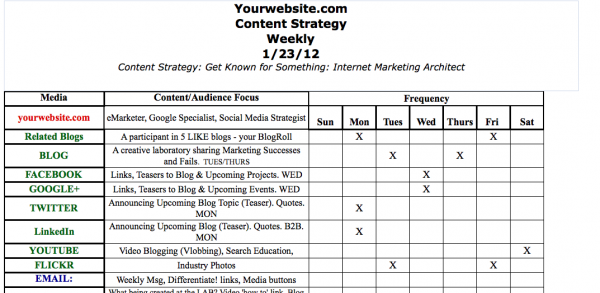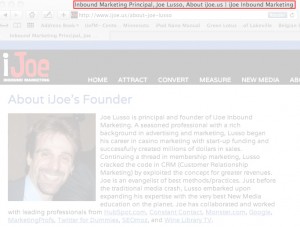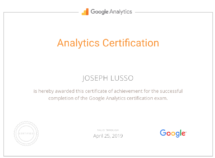Most websites are like a dead body on the internet – static with no movement whatsoever. This statement from a WordPress developer got me started in the creation of open source Content Management System (CMS) websites for a living.
It is also the statement that got me thinking about how a blog generates traffic to your website. By creating content on a regular schedule you perk up the ears of Google and begin opening your doors to website traffic.
WordPress makes it easy for anyone to implement a content strategy. After building a solid website infrastructure on an open source CMS platform like WordPress, most marketers then try to find ways to generate traffic. Think of the content strategy as your maintenance plan.
A customized content strategy can enhance any website, transforming it into a lively searchable website. Many clients ask, how often do I blog, vlog, tweet, facebook, google+ and/or email? Below is a sample content strategy.

The primary components of the content strategy are media and frequency. Typically, the top performing Social Media outlets (Facebook, Twitter, Linkedin) are used. The content should be customized to the business and reflect the sales cycle. The frequency should be consistent.
For example, one of my clients that sells beer preferred their tweets, blog posts and emails released later in the week. This practice enhances the weekend buying cycle of beer purchases. Tweeting food pairings with the beer brands further enhanced the effort! The key to success is creating content that is interesting to your fans. Be creative!
Fans subscribe to brands and products they love. Don’t be afraid to share good content often. Emails need to be well spaced apart and not be repetitive. Read the top reasons as to why fans unsubscribe. Bottom line: people unsubscribe because emails come too often and are chock full of junk.
Think of social media like the flash on a camera. Fans may miss your post. Most fans aren’t camping on Facebook and/or Twitter reading all your posts 24/7. Support your blog and emails with social media.
A consistent schedule of posts could potentially increase your business. For example, your customers will get used to hearing about sales/specials on specific days of the week. Now you’ve begun to cultivate a captive audience.
The content plan above is a model for a small business just beginning to execute an internet marketing strategy, but this plan could be tweaked to fit any sized business. For example, frequency should increase as you build your fan base.
Analytics will assist you in seeing what your fans are eating up and what they are ignoring. Employing a creative and flexible content strategy will keep you on top.
Learn more about business blogging below.
Learn More


